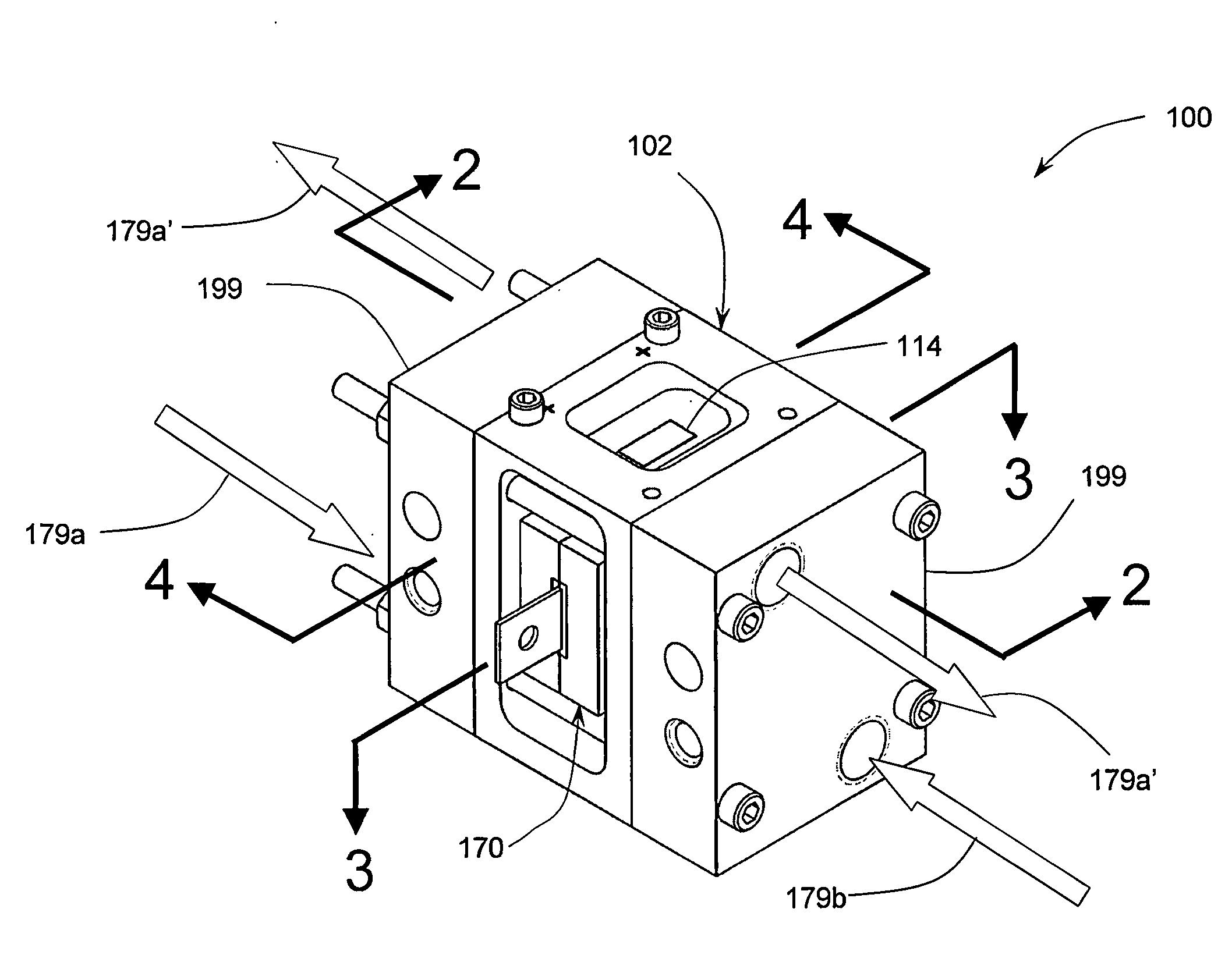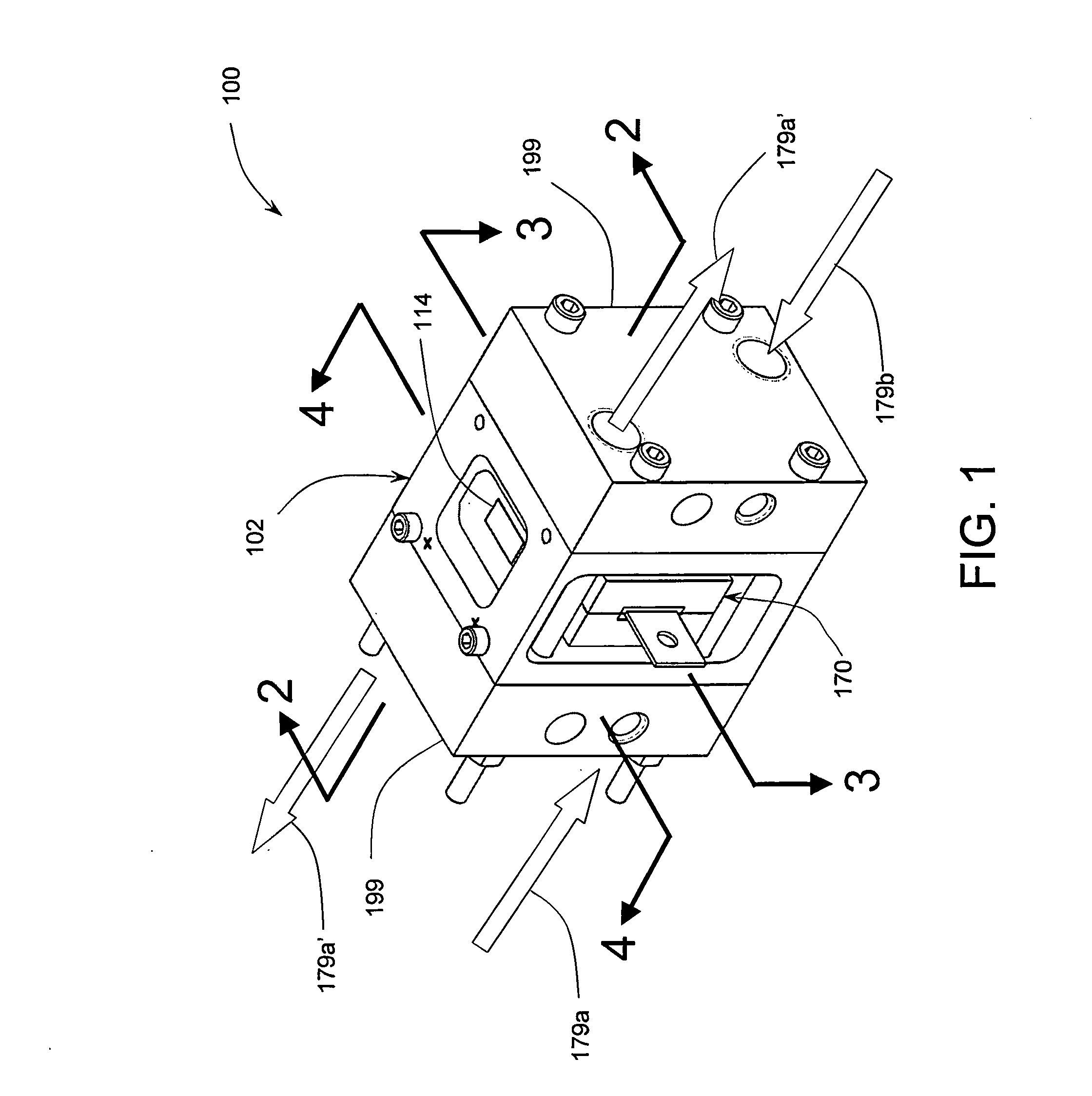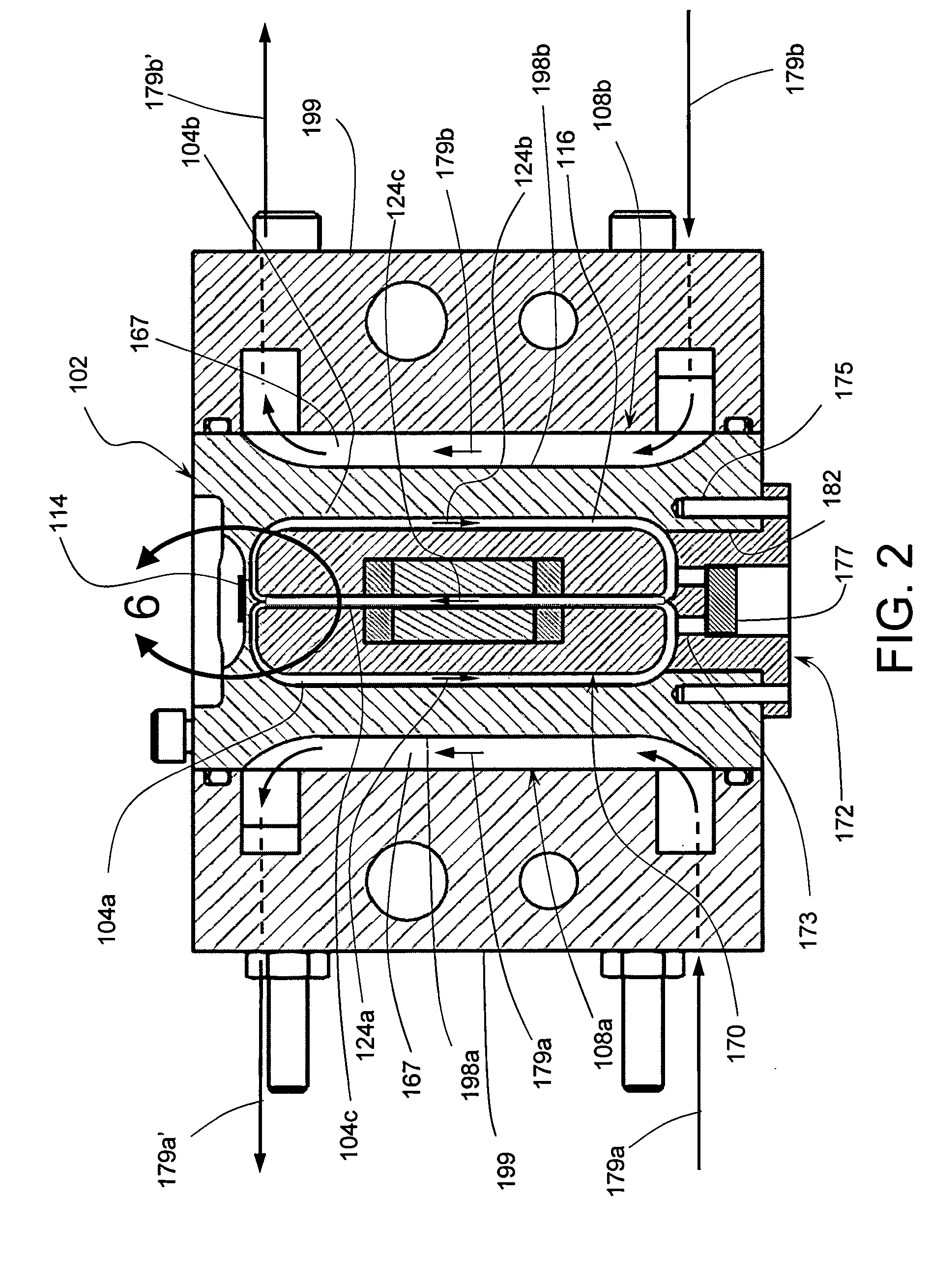Thermal mgmt. device for high-heat flux electronics
- Summary
- Abstract
- Description
- Claims
- Application Information
AI Technical Summary
Benefits of technology
Problems solved by technology
Method used
Image
Examples
Embodiment Construction
[0050]Selected embodiments of the present invention will now be explained with reference to drawings. In the drawings, identical components are provided with identical reference symbols in one or more of the figures. It will be apparent to those skilled in the art from this disclosure that the following descriptions of the embodiments of the present invention are merely exemplary in nature and are in no way intended to limit the invention, its application, or uses.
[0051]Referring now to FIG. 1, there is shown a thermal management device (TMD) 100 in accordance with one preferred embodiment of the present invention generally comprising a body 102, MHD pump assembly 170, and manifolds 199. FIGS. 2, 3, and 4 show principal cross-sectional views of the TMD 100 exposing additional elements including the fill plug 172 (FIGS. 2 and 4). As seen in FIG. 2, the body 102 together with the MHD pump assembly 170 and with the fill plug 172 in an assembled condition form an internal cavity defined...
PUM
 Login to view more
Login to view more Abstract
Description
Claims
Application Information
 Login to view more
Login to view more - R&D Engineer
- R&D Manager
- IP Professional
- Industry Leading Data Capabilities
- Powerful AI technology
- Patent DNA Extraction
Browse by: Latest US Patents, China's latest patents, Technical Efficacy Thesaurus, Application Domain, Technology Topic.
© 2024 PatSnap. All rights reserved.Legal|Privacy policy|Modern Slavery Act Transparency Statement|Sitemap



